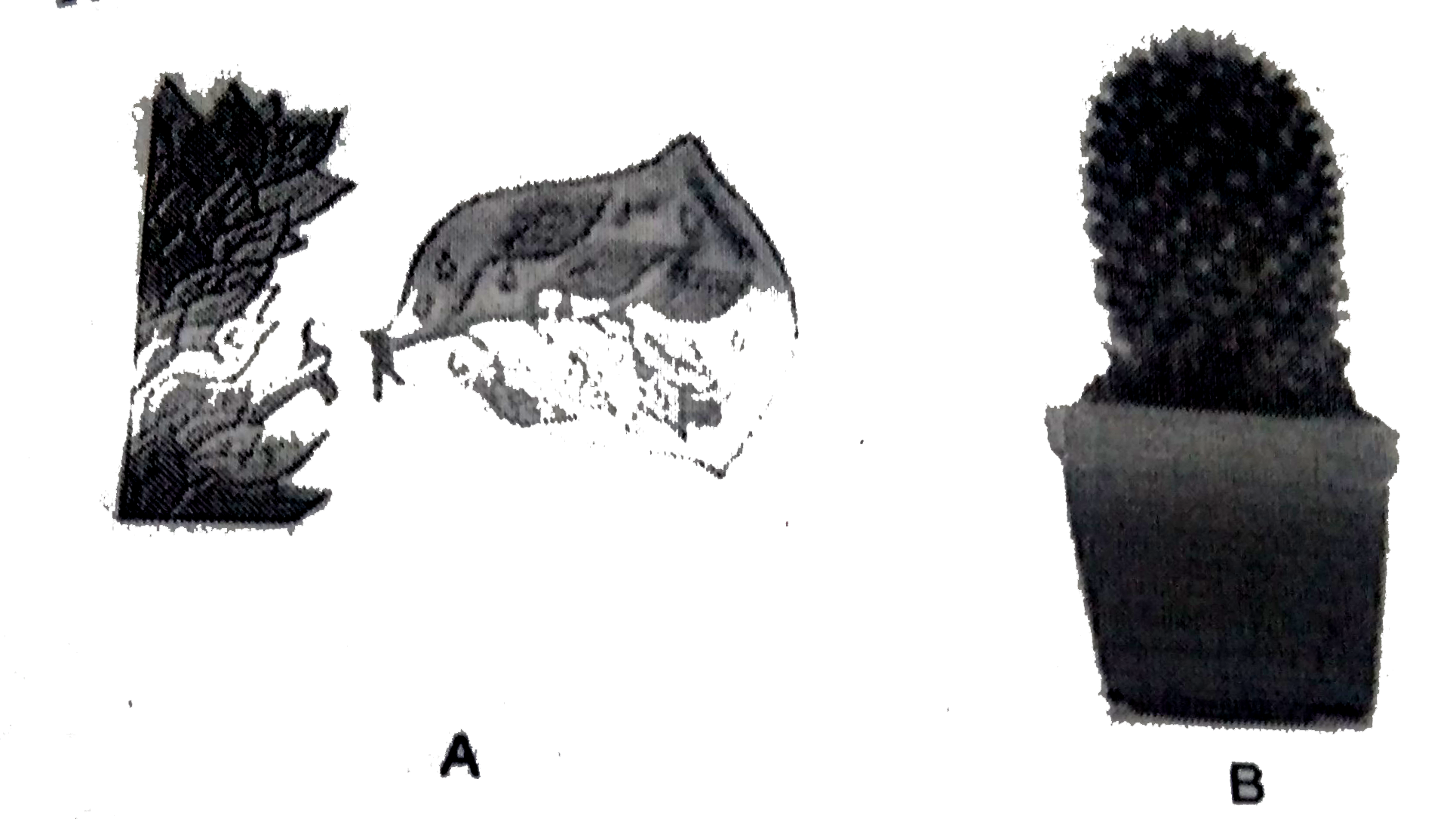Identify the adaptation of plants in desert habitat.
Waxy coating on leaves
Cone shaped trees.
Sloping branches
Thick and fleshy stems
The correct Answer is:d
Thick and fleshy stems is the adaptation of plants in desert habitat.
Topper's Solved these Questions
- ENVIRONMENT- AN ETERNAL GIFT TO MANKINDBOOK - PEARSON IIT JEE FOUNDATIONCHAPTER - ENVIRONMENT- AN ETERNAL GIFT TO MANKINDEXERCISE - SHORT ANSWER TYPE QUESTIONS
20 Videos
- ENVIRONMENT- AN ETERNAL GIFT TO MANKINDBOOK - PEARSON IIT JEE FOUNDATIONCHAPTER - ENVIRONMENT- AN ETERNAL GIFT TO MANKINDEXERCISE - CONCEPT APPLICATION
17 Videos
- ENVIRONMENT- AN ETERNAL GIFT TO MANKINDBOOK - PEARSON IIT JEE FOUNDATIONCHAPTER - ENVIRONMENT- AN ETERNAL GIFT TO MANKINDEXERCISE - CROSSWORD
1 Videos
- HEALTH - OUR GREATEST WEALTHBOOK - PEARSON IIT JEE FOUNDATIONCHAPTER - HEALTH - OUR GREATEST WEALTHEXERCISE - CROSSWORD
1 Videos
Similar Questions

Answer the following questions based on the above figure.
List out the adaptations of the plant B for the habitat.
View Solution
Answer the following questions based on the above figure.
a) Identify the plant B and predict the habitat.
b) What does the activity shown in the above diagram (refer figure A) indicate?
c) List out the adaptation of the plant B for the habitat.
View Solution
Knowledge Check
Identify the odd combination of the habitat and the particular animal concerned
APeriyar ................. ElephantBRann of Kutch ......... .. Wild AssCDachigam National Park ...... Snow LeopardDSunderbans ........... Bengal tigerIdentify the correct pair of an animal and its habitat region
AElephant - RanthamboreBFlamingo - Ranno of KutchCWild ass - DachigamDGreat Indian Bustard - AssamIdentify the odd combination of the habitat and the particular animal concerned
ADachigam National Park - Snow LeopardBSunderbans - Bengal TigerCPeriyar - ElephantDRann of Kutch - Wild Ass
Which one is an anatomical adaption in plants growing in dry habitats?
View SolutionWhat are adaptations? State the adaptations found in desert plants to minimize water loss through transpiration.
View SolutionDesert adaptations.
View Solution
Answer the following questions based on the above figure.
Identify the plant B and predict the habitat.
View SolutionEnlist adaptations shown by plants in grasslands.
View Solution
